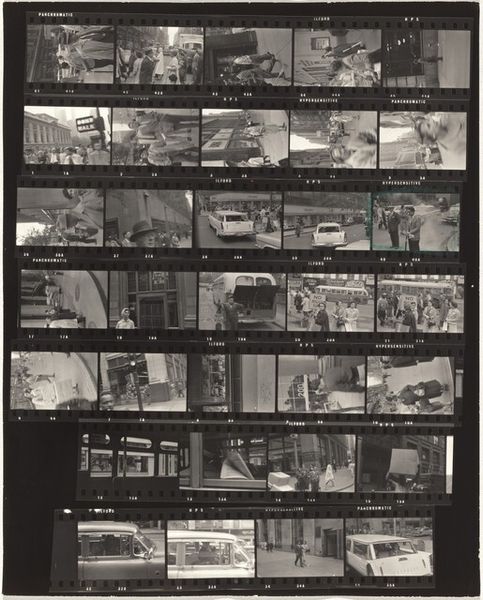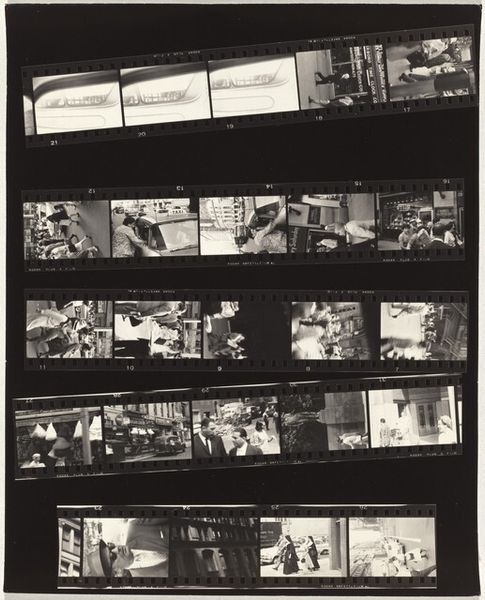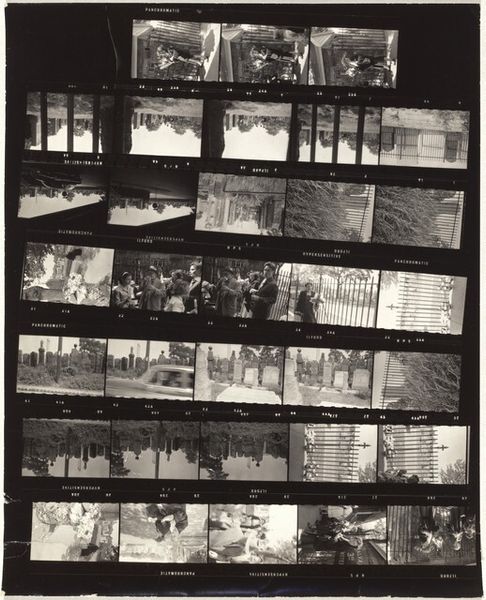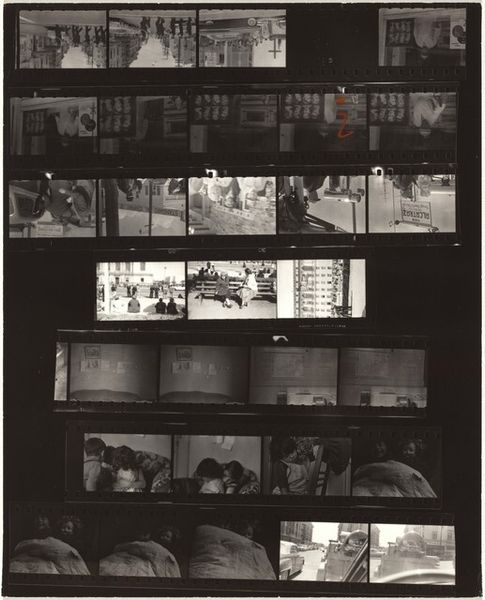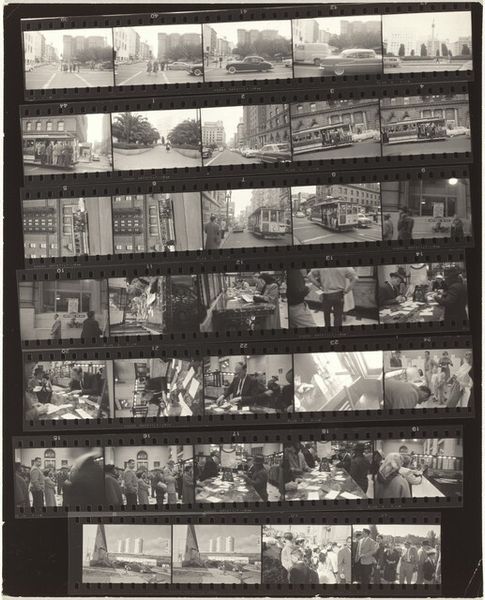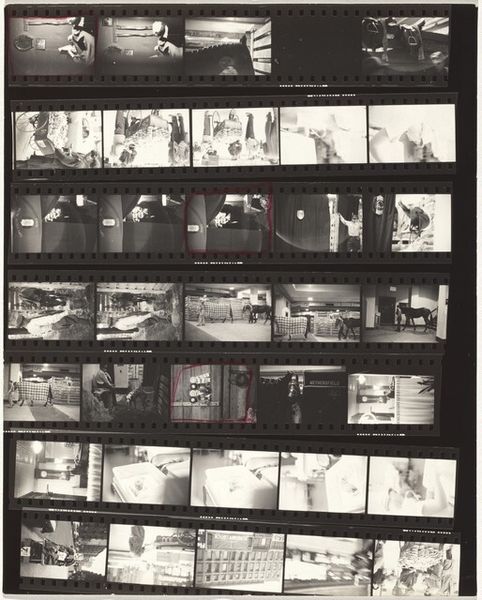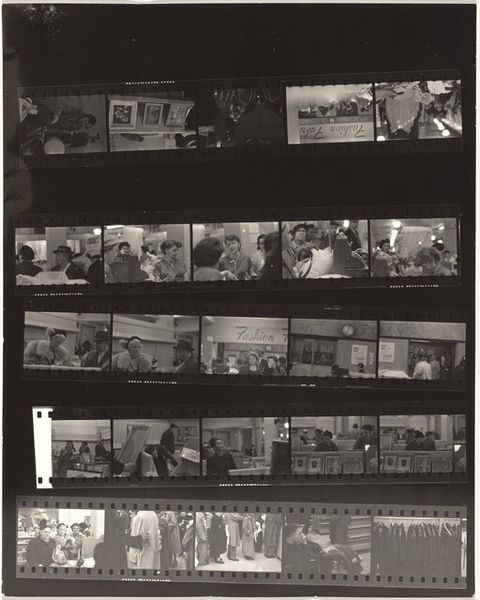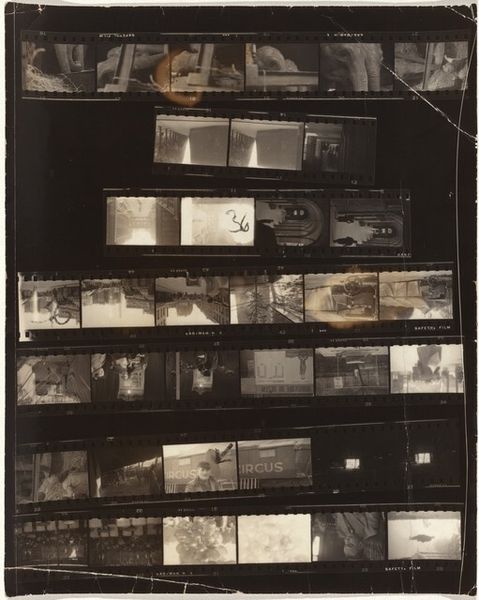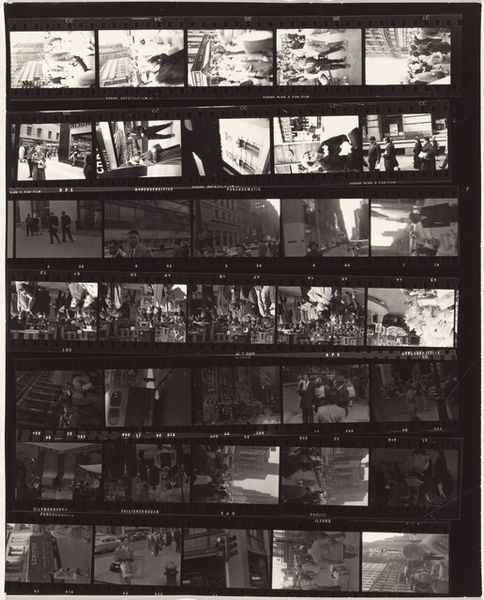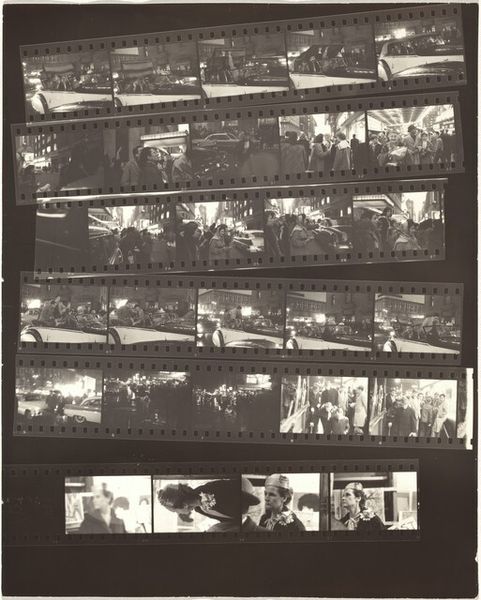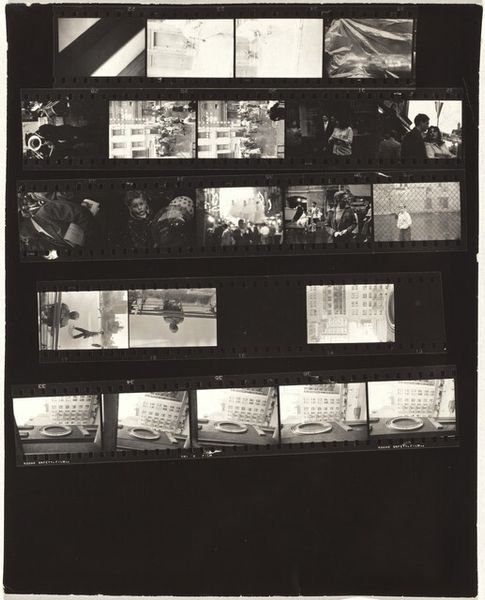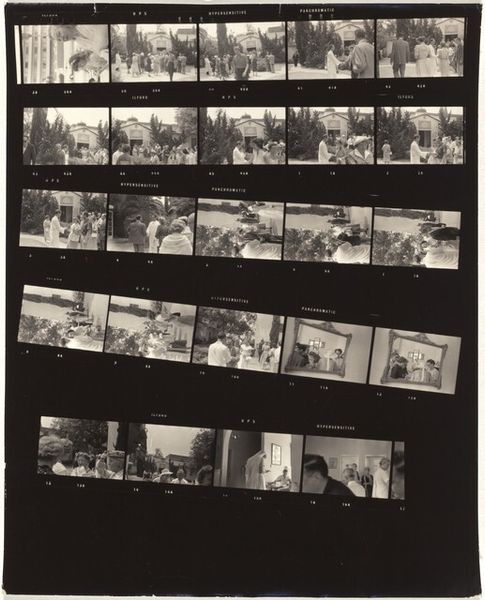
photography, gelatin-silver-print
#
warm monochrome
#
archive photography
#
street-photography
#
photography
#
gelatin-silver-print
#
monochrome photography
#
pop-art
#
modernism
#
realism
#
monochrome
Dimensions: sheet: 25.3 x 20.2 cm (9 15/16 x 7 15/16 in.)
Copyright: National Gallery of Art: CC0 1.0
Curator: It's hard not to get lost in Robert Frank's gelatin-silver print, "New York City no number" from 1955, it seems so simple and warm in a way. What strikes you first about this work? Editor: The repetition is immediate, rows of frames almost stacked, making me think of an organized mind reflecting on unorganized reality. What do you mean when you say warm? It seems rather cool and stark to me. Curator: Well, the way the greys flow is very harmonic in monochrome photography. Look, you’ve got cityscapes juxtaposed against bustling crowds, architecture playing with glimpses of everyday life. It gives me a voyeuristic feeling but grounded, you know? Almost feels as though you are watching life go by on repeat. Editor: Exactly. Each frame offers different spatial dimensions—depth, surface, compression. Consider the use of seriality and how it shapes our experience. How would you articulate what might tie the segments together besides tonality? Curator: If I were to dive into his process a bit, the image shows a filmstrip filled with seemingly ordinary moments, things that we've all done or seen... Robert was Swiss-American, perhaps this series reflects his personal navigation across this new American life, what do you reckon? Editor: Certainly. Each frame acts as a discrete unit yet part of a larger matrix. His aesthetic seems both random and meticulously designed; perhaps these were not discarded negatives. This approach undermines classical composition which might actually highlight cultural criticism. Curator: Oh that’s interesting! What criticism would that be exactly? Editor: Think about the date – 1955. Post-war America brimming with consumerism, and Frank’s vision pulls back the curtain offering the unseen parts which aren’t as glossy or as airbrushed as perhaps mainstream magazines showcased. What is it for you personally about Frank’s photographs? Curator: It's that grit meeting beauty, almost a bittersweet song in visual form... and that he captured an epoch where the streets felt utterly authentic. Like frozen poems scattered over asphalt and concrete. Editor: Precisely, it documents an era while questioning our perception, challenging the norms through materiality. It pushes beyond realism towards reflective commentary.
Comments
No comments
Be the first to comment and join the conversation on the ultimate creative platform.
